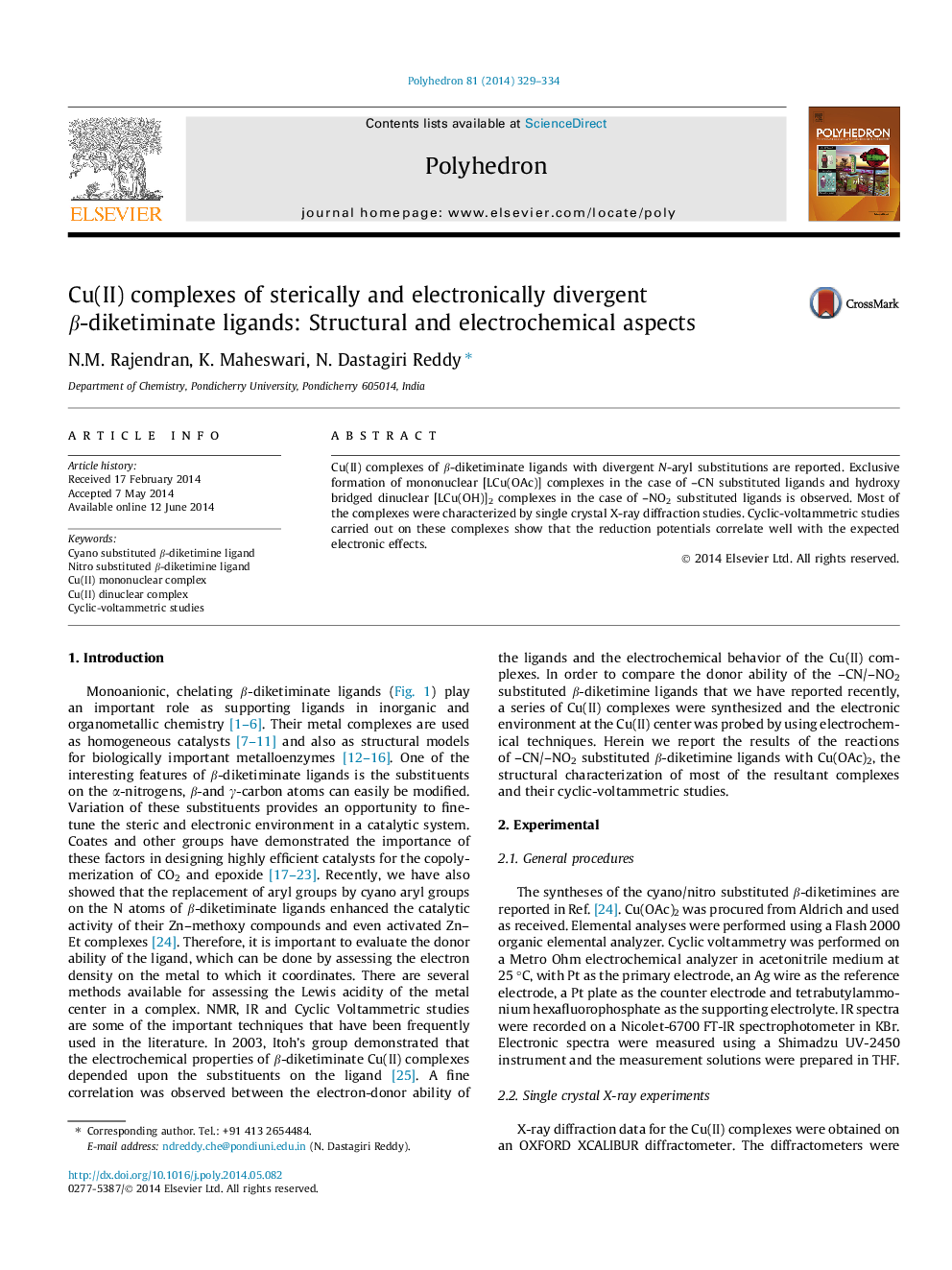| Article ID | Journal | Published Year | Pages | File Type |
|---|---|---|---|---|
| 1334437 | Polyhedron | 2014 | 6 Pages |
Cu(II) complexes of β-diketiminate ligands with divergent N-aryl substitutions are reported. Exclusive formation of mononuclear [LCu(OAc)] complexes in the case of –CN substituted ligands and hydroxy bridged dinuclear [LCu(OH)]2 complexes in the case of –NO2 substituted ligands is observed. Most of the complexes were characterized by single crystal X-ray diffraction studies. Cyclic-voltammetric studies carried out on these complexes show that the reduction potentials correlate well with the expected electronic effects.
Graphical abstractReactions of Cu(OAc)2 with –CN substituted β-diketimine ligands in a mixture of CHCl3 and CH3OH afforded the mononuclear complexes [LCu(OAc)], whereas –NO2 substituted ligands afforded hydroxy bridged dinuclear [LCu(OH)]2 complexes. Most of the complexes were characterized by single crystal X-ray diffraction studies. The effect of substitution on the donor ability of the ligands is evaluated by probing the electrochemical behavior of the complexes.Figure optionsDownload full-size imageDownload as PowerPoint slide
